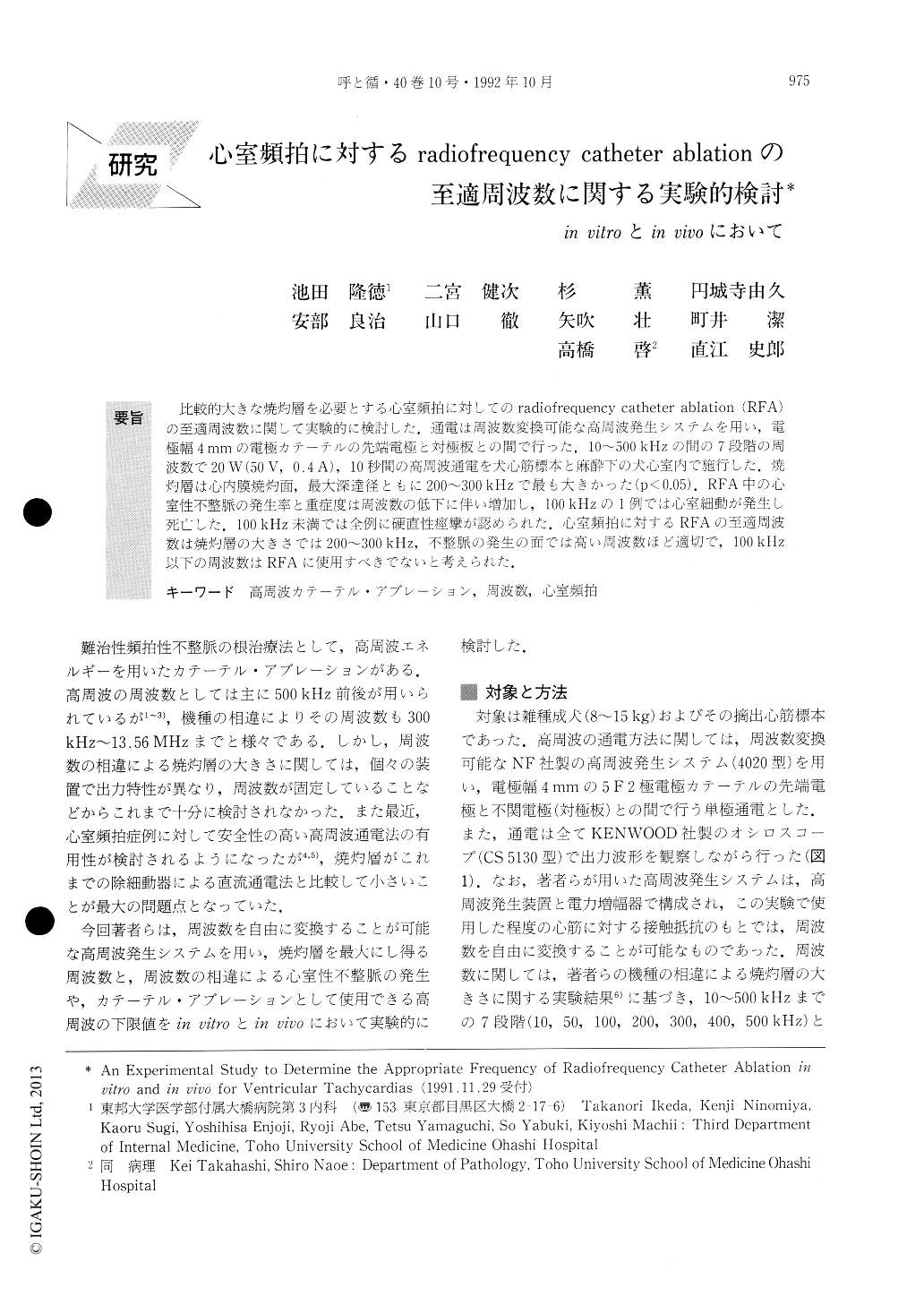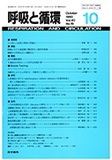Japanese
English
- 有料閲覧
- Abstract 文献概要
- 1ページ目 Look Inside
比較的大きな焼灼層を必要とする心室頻拍に対してのradiofrequency catheter ablation(RFA)の至適周波数に関して実験的に検討した.通電は周波数変換可能な高周波発生システムを用い,電極幅4mmの電極カテーテルの先端電極と対極板との間で行った.10〜500 kHzの間の7段階の周波数で20W(50V,0.4A),10秒間の高周波通電を犬心筋標本と麻酔下の犬心室内で施行した.焼灼層は心内膜焼灼面,最大深達径ともに200〜300kHzで最も大きかった(p<0.05).RFA中の心室性不整脈の発生率と重症度は周波数の低下に伴い増加し,100kHzの1例では心室細動が発生し死亡した.100kHz未満では全例に硬直性痙攣が認められた.心室頻拍に対するRFAの至適周波数は焼灼層の大きさでは200〜300kHz,不整脈の発生の面では高い周波数ほど適切で,100 kHz以下の周波数はRFAに使用すべきでないと考えられた.
The purpose of this study was to examine the appro-priate frequency of radiofrequency catheter ablation (RFA) for ventricular tachycardia.
Radiofrequency energy generated by a device in which the frequency could be changed, was delivered from an electrode catheter with an electrode tip-width of 4 mm. RFA was performed for 10 seconds with 20W (50V×0.4A) using 7 different frequencies from 10 to 500 kHz on ventricular myocardium in vitro and in anesth-etized dogs. The ablated lesion was significantly larger with RFA of 200-300 kHz in both surface area and depth (p<0.05).

Copyright © 1992, Igaku-Shoin Ltd. All rights reserved.


